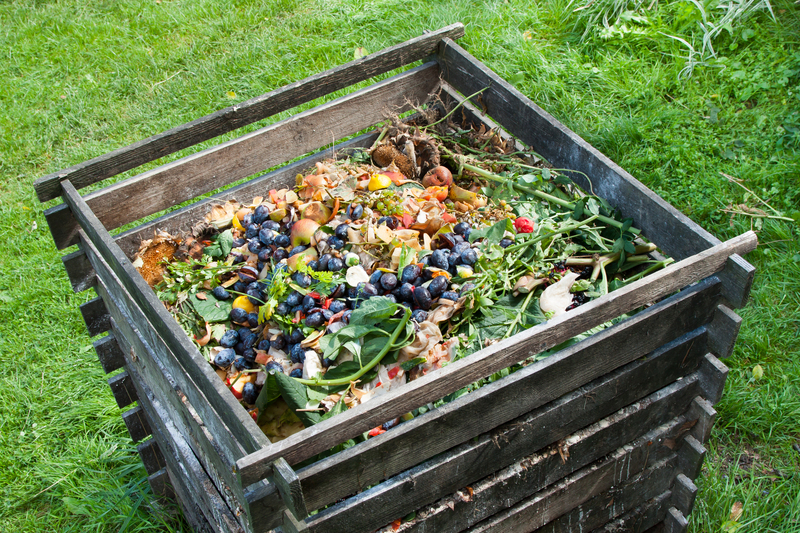The Collective Issue of Fly-Tipping
Posted on 28/03/2025
Fly-tipping, the illegal disposal of waste, has become a growing concern for communities, local authorities, and environmentalists worldwide. This burgeoning issue brings along numerous consequences, affecting not just the environment, but also public health, local economics, and community well-being. Tackling fly-tipping requires collective action and a thorough understanding of its causes, impacts, and solutions.
The Scope of Fly-Tipping
Fly-tipping can involve anything from household waste and garden refuse to larger hazardous materials such as building waste and chemical pollutants. The scale of this issue is alarming. In the UK alone, fly-tipping incidents reported to local authorities hit nearly one million cases annually, costing millions in clean-up efforts. This illegal practice is not merely an eyesore; it's a multifaceted problem that undermines the integrity of communities and ecosystems.

Environmental Consequences
The environmental impacts of fly-tipping are profound. Illegally dumped waste can:
- Harm wildlife through ingestion or entanglement.
- Pollute soil and water sources.
- Introduce invasive species.
- Lead to habitat loss.
Toxic materials can seep into groundwater, damaging plant life and harming animals dependent on these water sources. The ramifications are far-reaching, disrupting entire ecosystems and reducing biodiversity.
Economic Implications
The economic burden of fly-tipping is staggering. Local authorities spend millions annually on cleanup operations. These funds could otherwise be invested in community development, education, or healthcare. Additionally, property values tend to decrease in areas afflicted by fly-tipping, further straining local economies.
Public Health Concerns
Fly-tipping poses significant public health risks. Accumulated waste can become breeding grounds for pests such as rodents and insects that spread disease. Hazardous materials like asbestos and chemicals can harm humans directly or indirectly. The improper disposal of medical waste can lead to a variety of health issues for local communities.
Social Impact on Communities
Fly-tipping undermines community pride and social cohesion. It creates unsightly landscapes that can deter community engagement and increase feelings of social neglect. This issue particularly affects disadvantaged areas, perpetuating a cycle of degradation and social inequality.
Strategies to Combat Fly-Tipping
Addressing fly-tipping requires a multi-pronged strategy:
- Education and Awareness: Community education campaigns can inform residents about the legal consequences of fly-tipping as well as proper waste disposal methods.
- Increased Surveillance: Installing CCTV cameras in hotspot areas can deter individuals from dumping waste illegally.
- Enhanced Penalties: Stricter fines and penalties can serve as a strong deterrent.
- Community Involvement: Local cleanup initiatives can foster community spirit and reduce the prevalence of fly-tipping.
- Improved Waste Services: Ensuring accessible, affordable waste disposal services can reduce the temptation to fly-tip.
Pros and Cons of Combating Fly-Tipping
Pros:
- Enhanced environmental health.
- Improved public health conditions.
- Increased community pride and engagement.
- Reduction in cleanup costs over time.
Cons:
- High initial costs for increased surveillance and public campaigns.
- Potential backlash from individuals resistant to change.
- Resource allocation might become a challenge.
Tips for Communities
1. Organize Local Cleanups: Regular community cleanups can help maintain clean environments and discourage repeat offenders.
2. Educate Residents: Information sessions and flyers about proper waste disposal can significantly reduce fly-tipping incidents.
3. Report Incidents: Encourage quick reporting of fly-tipping to local authorities for prompt action.
4. Support Local Regulations: Advocate for stronger laws and regulations to combat fly-tipping effectively.

Takeaways
- Fly-tipping is a global issue with severe environmental, economic, and social implications.
- A comprehensive approach including education, increased surveillance, and community involvement is essential for combating fly-tipping.
- The pros of tackling fly-tipping far outweigh the cons, making it an urgent concern for collective action.
Conclusion
Fly-tipping is a pressing issue that necessitates immediate and sustained action. The collaboration between local authorities, communities, and individuals is crucial to create a significant impact. By understanding the scope of the problem, its consequences, and viable strategies to combat it, we can work towards a cleaner, safer, and more prosperous future for everyone.

 020 3744 5548
020 3744 5548













